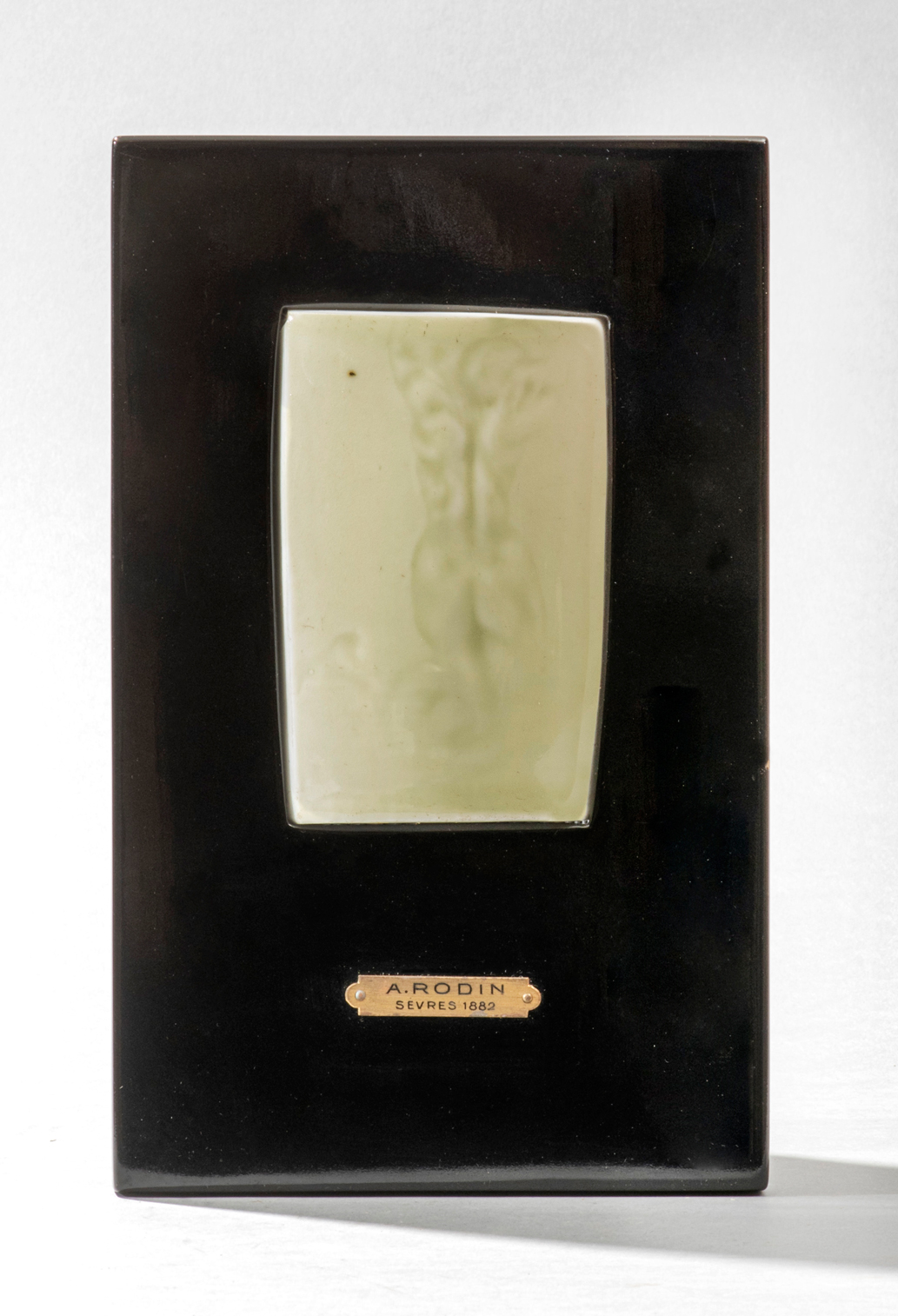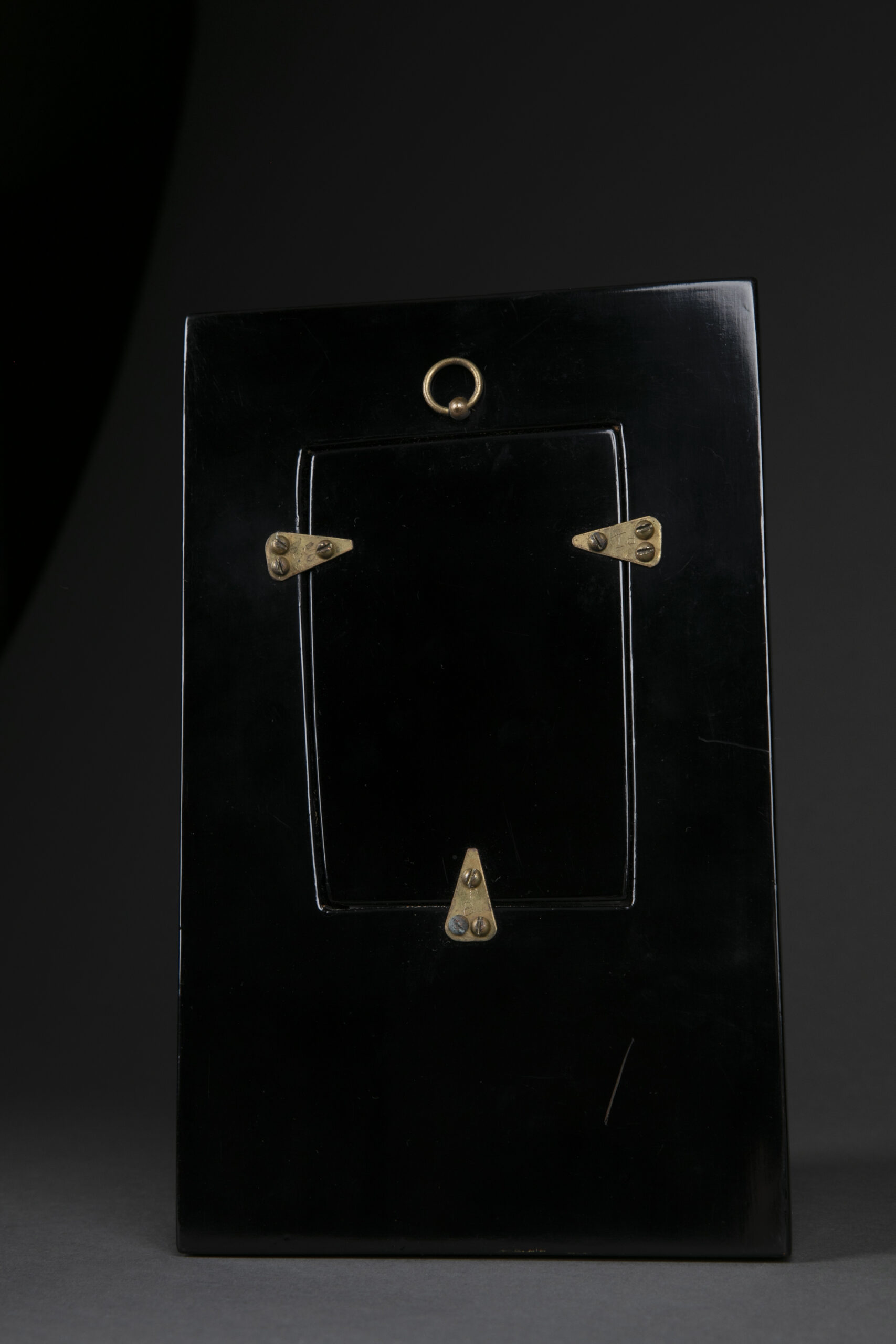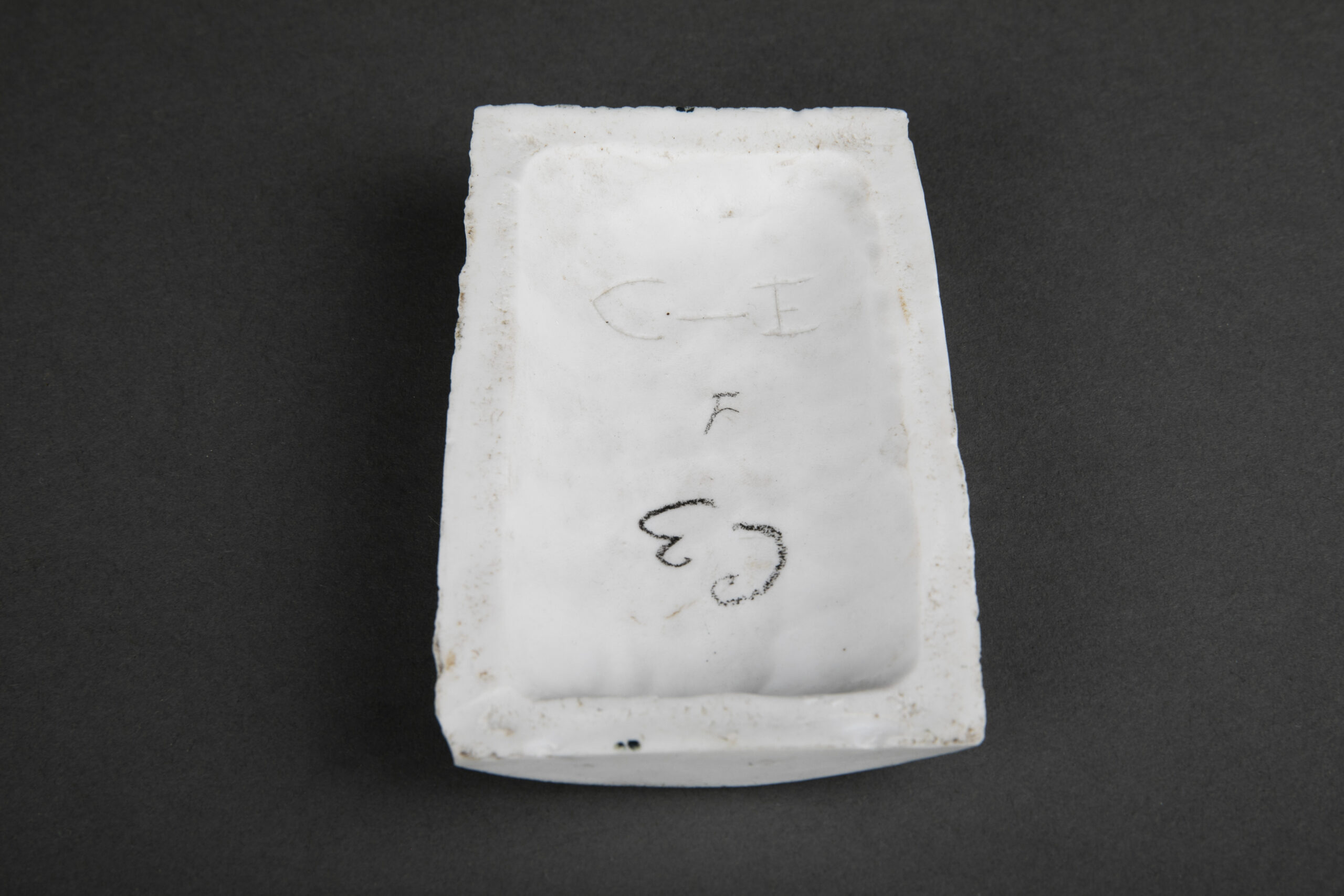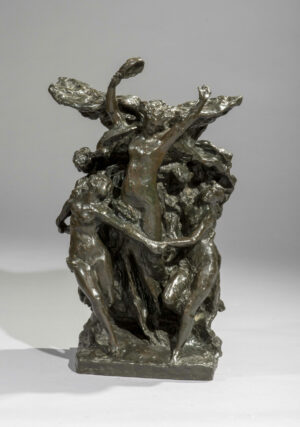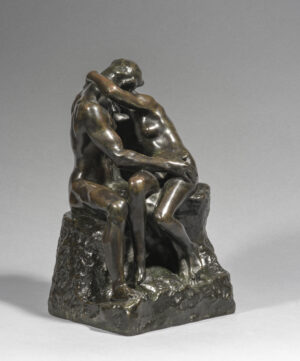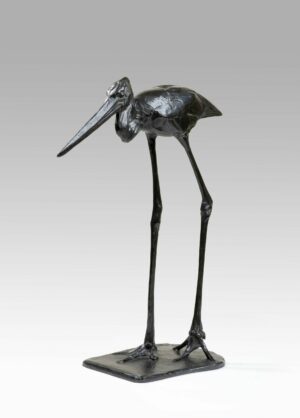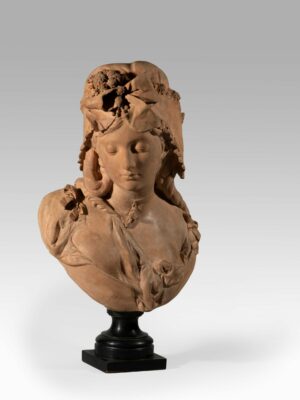Description
The relationship between sculpture and decoration runs through Rodin’s entire career and goes beyond the sculptor’s work in the two first decades (1860-1880). His artistic activity exceeds the threshold of conventional categories and divisions, namely: drawing, pieces of art, “Salon” sculpture, monumental sculpture…. It was Carrier-Belleuse who, in May 24, 1879, urged the Manufacture de Sèvres to hire Auguste Rodin.The latter fully expressed his creativity as a draftsman, sculptor and decorator in the art of porcelain, as shown by his masterpieces, Pompeï Vases The Night and The Day (1881-82) (Sèvres, Musée National de la Céramique, MNC 8522; Paris, Musée Rodin, S 2416). At the end of 1887 or early 1888, the artist was commissioned three models of the Saïgon Vase for the 1889 World Exhibition. Unlike those decorated earlier, these edition items were never worked on directly by the sculptor: he provided the Manufacture of Sèvres with vases decorated with bas-reliefs, probably in plaster, which were moulded to create several copies. Rodin used motifs previously elaborated for his Gates of Hell so as to produce new ones for Sèvres. It is in fact a part of the bas-relief decoration of the left pedestal of the Gates of Hell that can be seen on one side of the vase and the enamelling test Limbo that we now own: two ‘Michelangelesque’ figures chained together vertically, as if to evoke the gloomy parade of Limbo shadows…For the second enamelling test, Siren, Rodin took up again the figure, shown from the back, in the round, of the Kneeling Fauness, another character from the Gates of Hell. By turning these faunesses into sirens, he merely moved from one monstrous creature to another, both of which being associated with duplicity, seduction and voluptuousness: “…, and in a few moments, she appears to my eyes, amiable and seductive. Then, with an harmonious and captivating voice, whose charm intoxicated me, she sang thus: – I am the sweet siren: in the midst of the seas, the bewitched sailors lose themselves at the sound of my voice.” (Dante,The Divine Comedy).
Before launching a major decor, Rodin, like his fellow decorators, carried out several tests, in particular to judge the alliance between the glaze and the moulding.The enamellers therefore vary the colours, texture and the thickness of the enamel on the parts of the decor exposed to fire in order to test their reaction. Our enamelling tests are inserted, like those of the Musée Rodin, in beautiful lacquered wood frames by Hamanaka (1937), a great Japanese artist who contributed to the diffusion of this art in France.
It should be noted that the two models of the Rodin museum probably come from the same origin, namely Ernest-Simon Auscher, head manufacturing for the Manufacture de Sèvres between 1879 and 1889, and probably the auhor of these two tests.

